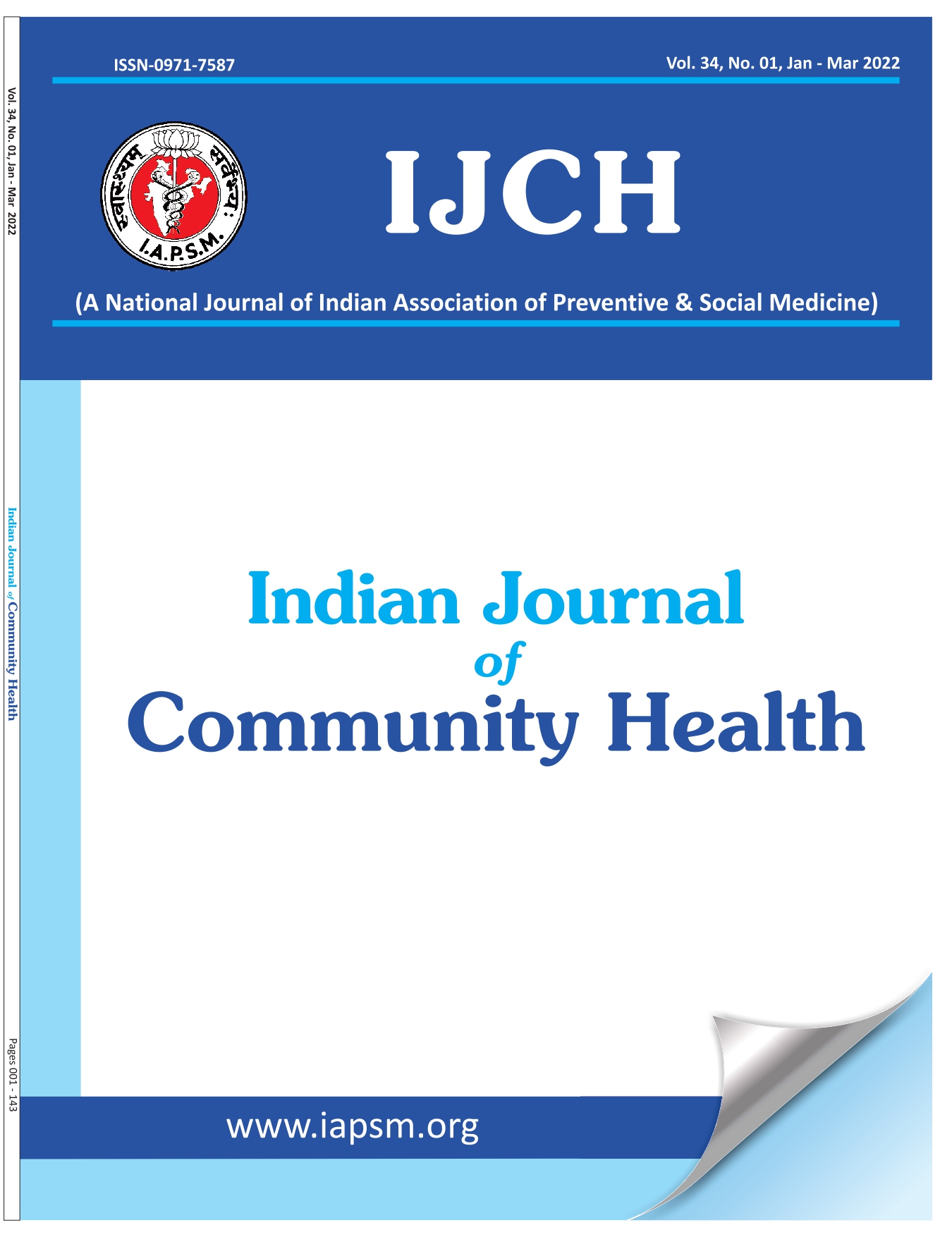Nutritional status and self-reported morbidity pattern of urban elderly in Hyderabad city: A preliminary study
DOI:
https://doi.org/10.47203/IJCH.2018.v30i04.009Keywords:
Elderly, Urban, Nutrition, Morbidity, BMIAbstract
Background: Ageing is a natural phenomenon associated with physiological and functional decline in the body, which makes elderly people vulnerable to malnutrition and age related morbidity. Hence, this study was undertaken to assess nutritional status and morbidity pattern of urban elderly. Aims & Objectives: To assess the nutritional status and the morbidity status of urban elderly. Material and methods: A community based cross-sectional study was conducted among the urban elderly in Hyderabad. A total of 261 individuals of ?60 years were recruited for this study. Anthropometric measurements were measured to assess nutritional status. Pre-tested questionnaire was used to collect information on demographic particulars and self-reported morbidity profile. Data are presented as mean ± standard error and significance level was considered at p < 0.05. Result: The mean height and weight were 160.49 Cm ±0.55 and 66.59 Kg ± 0.68, respectively while the mean BMI was 25.83 Kg/m2 ± 0.22. The prevalence of overweight and obesity among urban elderly was 46.0% and 31.4 %, respectively. The prevalence of central and truncal obesity was 60.1% and 84.6% respectively. The prevalence of morbidities such as poor vision, hypertension, joint pains, diabetes, cataract and hyperacidity was 86.1%, 63.2%, 49.4%, 48.3%, 36% and 32.2% respectively. There was a significant (p<0.05) gender difference among BMI, central obesity, CVDs, joint pains and osteoarthritis. Conclusion: In general, the prevalence of NCDs such as obesity, hypertension and diabetes are significant public health concern among urban elderly. Therefore, primordial and primary preventive measures should be adopted during adolescence and early adulthood for the prevention and control of NCDs during the period of ageing
Downloads
Downloads
Published
How to Cite
License
Copyright (c) 2019 Indian Journal of Community Health

This work is licensed under a Creative Commons Attribution-NonCommercial-NoDerivatives 4.0 International License.





